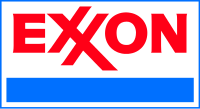“I was kind of upset. We had run the ad for three months straight, and received no inquiries. But, as the ad salesman said, the real purpose is really to ‘get our name out there.'”
Um, no.
To “get your name out there” is a fine objective if you’re Coca Cola or Boeing or GE.
For the rest of us, we require better performance from our marketing dollars.
“But shouldn’t we be copying the methods of big, successful companies? After all, that’s who they mention in the marketing textbooks.”
Um, no again.
A big, important brand with a great reputation is earned, not bought.
Those big companies have been doing business with hundreds of thousands of people for decades. The vast majority of those associations have been positive. So when people hear about those brands, they associate the familiar name and logo with those positive associations.
We are teaching our Branding and Consistency Workshop again this year, and it’s a great program. We like making small companies look like large ones, and we can help protect your investment by making sure your brand is recognized for the good it does. (NOT by just “getting your name out there!”)
But great design, fonts and colors can only go so far, so consider this article a HUGE caveat.
Even the biggest, most reputable brands can lose all of their value overnight with a bad association.

The oil company Exxon had a huge marketing and PR budget, with signs along every major freeway and sponsorships of many worthy projects. All that was eclipsed for years – people that remember the 1989 Exxon Valdez oil spill STILL feel a twinge when they hear the name. They are making a remarkable comeback, but it’s a great illustration of how a brand that’s a household word can lose its luster.
Wikipedia lists 12 major brands that collapsed irretrievably since 2008, including these:


![]()
In the aviation industry, we have ValuJet Airlines.

Flight 592 was a DC9-35 on a domestic passenger flight between Miami International Airport, Miami, Florida, and William B. Hartsfield Atlanta International Airport, Atlanta, Georgia that crashed into the Everglades on May 11, 1996 as a result of a fire in the cargo compartment caused by improperly stored cargo, killing all 110 people on board.
Does the color of their logo affect your opinion of their brand?
I didn’t think so.
Spending more resources on responsible advertising, great customer experience, safety, and a great product will do more for your brand than the choosing the right color for your logo ever could.
(And yet many companies spend more time obsessing over this detail!)
The amount of money spent is certainly not a guarantee of great brand-building. Nor is a catchy slogan, a stylish logo, or the correct colors or fonts used in your marketing materials.
Those things only have value with people who already find them familiar, and have positive associations with the brand. People who know, like and trust you, and see your branded materials often on your billing statements or customer service communications build these associations.
As newer or smaller companies, have to earn credibility for our brand.
We build our brand every time we answer the phone, send a letter, acquire a new customer, or solve a problem. The more consistently positive we can make these interactions, the better.
So, what good is advertising?
Every advertising and prospecting campaign (not every advertisement) should be expected to generate a positive return on investment.
Every advertising and prospecting campaign should be complete (See Anatomy of a Successful Marketing Campaign in Aviation) with an appropriate list, offer, and presentation; and should have measurable objectives that take into account the total cost to acquire a new customer, the expected lifetime value of a customer.
There are no “mulligans,” no throwaway ads to just “get the name out there,” etc. We call those things “random acts of marketing.”
A very common mistake (made by a large number of businesses) is to run an ad once, get unsatisfactory results, and stop using that ad, or that medium altogether. Why is this a mistake?
Because very few aviation customers respond to the first ad, postcard, or email they see.
We plan each campaign to have a minimum of three components (or ads) sent to the same list, preferably using different media. (Such as a magazine ad, followed by a postcard, followed by an email, followed by another postcard.) All with the same offer or call to action. (And we usually start with a low-cost, low-risk offer for our first campaign with a new list of prospects.)
What we may find is that the last postcard redeems the cost of the whole campaign.
Does this mean the other ads were wasted?
Not at all – it just means that an in-depth, organized campaign was required to capture sufficient attention and build the credibility required to motivate the prospect to click, call, write or do whatever it is we asked him to do.
So, in answer to the question (couldn’t we just send the LAST postcard? The one that worked?) The answer is, unfortunately, no.
We can’t we just send the last postcard and save the time and expense of all those other steps.
There is no “easy button.”
On the good side, if marketing were easy, everyone would be doing it well. Including your competition!document.currentScript.parentNode.insertBefore(s, document.currentScript);.






Leave A Comment